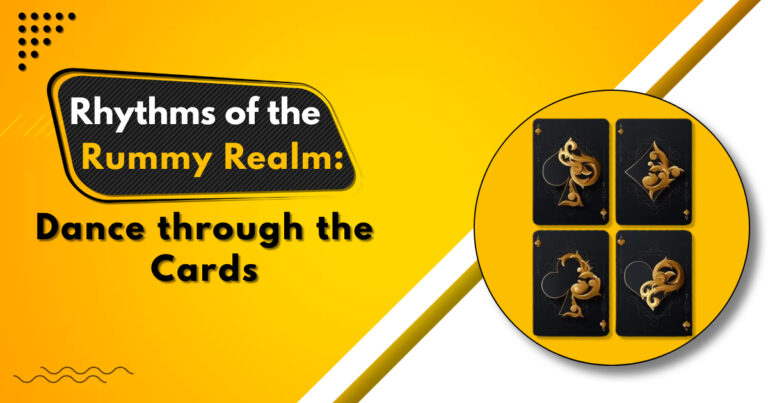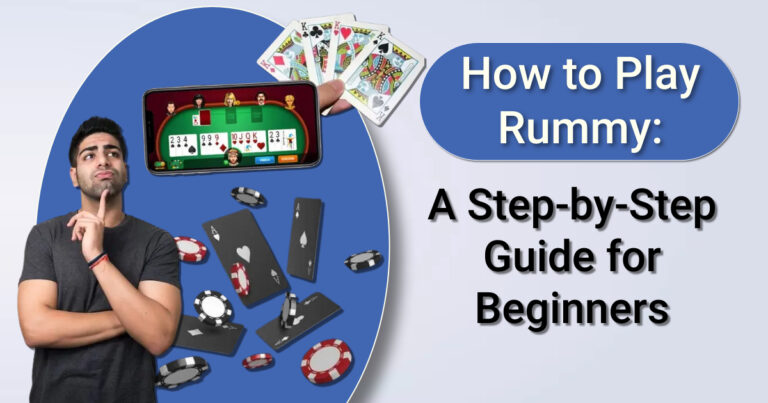Teen Patti and Rummy: Understanding the Differences and Similarities
Card games like Teen Patti and Rummy have always been a source of entertainment, challenge, and strategy for players around the world. In India, two of the most popular card games that have captured the attention of millions are Teen Patti and Rummy games. While both games are beloved and share some basic elements due to their nature as card games, they differ significantly in terms of gameplay, strategy, and objectives. Understanding these differences and similarities can offer insights into what draws players to one game over the other and what makes each game unique in its own right.

The Origins and Popularity
Teen Patti is a game deeply rooted in Indian culture. It is often played during social gatherings, festivals like Diwali, and casual get-togethers. Teen Patti, meaning “three cards” in Hindi, is believed to have derived from the British game “Three Card Brag.” Over time, it has evolved into its own distinct form with rules that appeal to Indian players. Teen Patti Stars is simple to learn, fast-paced, and often associated with fun, chance, and a dash of psychology.
Rummy, on the other hand, has international origins. It’s a game with many variations, such as Gin Rummy, Indian Rummy, and more. Indian Rummy, which has become the most popular variant in India, is usually played with two decks of cards and involves the drawing and discarding of cards to form valid sets and sequences. While Rummy also enjoys a massive fan base, its appeal often lies in the game’s demand for mental acuity and long-term strategy, as opposed to the often luck-driven excitement found in Teen Patti and Rummy.
Objective and Gameplay
The primary objective in Teen Patti is straightforward: to have the best three-card hand at the table. Players place bets, and the game continues until all but one player folds, or the showdown occurs where players reveal their hands. Hands are ranked in terms of value, with combinations like trails (three cards of the same rank), pure sequences, sequences, color (flush), and pairs.
In contrast, Rummy is about forming valid sets and sequences from the cards dealt to a player. A set is a group of three or four cards of the same rank, but different suits, while a sequence is a consecutive series of cards in the same suit. The rummy game rules require players to draw and discard cards in an effort to organize their hand into these valid groups before any of their opponents do.
Key Difference: While Teen Patti and Rummy differ in gameplay, Teen Patti revolves around betting and bluffing with the goal of having the best hand, while Rummy is focused on skill, strategy, and forming card combinations over time. Teen Patti is a fast-paced game, often played in quick rounds, while Rummy requires patience and concentration as the game progresses gradually.
Betting vs. Strategy
One of the defining characteristics of Teen Patti is its reliance on betting. Much like poker, the game involves rounds of betting, where players can choose to stay in the game by matching or raising the current bet or folding if they believe their hand isn’t strong enough. This betting aspect brings in an element of psychology, as players often try to bluff their opponents into folding, a tactic commonly seen in both Teen Patti and Rummy. A weaker hand can win if the player has successfully convinced others to fold.
Rummy, on the other hand, does not involve betting. Instead, it is a game of pure strategy. The key to winning lies in assessing the probability of drawing useful cards, discarding the right ones, and keeping track of what your opponents are doing. As such, Rummy appeals more to players who enjoy games of skill and deduction rather than those driven by high-risk betting.
Key Difference: Teen Patti and Rummy offer contrasting experiences: Teen Patti’s betting system introduces an element of financial risk and reward, adding to the thrill, while Rummy, being a non-betting game, focuses more on strategic card play and planning.

The Role of Luck
Teen Patti is heavily influenced by chance. Since players are dealt only three cards, much of the game’s outcome can depend on the initial hand dealt. While there is certainly skill involved in betting, reading opponents, and bluffing, the game’s short-term nature and reliance on three cards make it a game where luck plays a considerable role, especially when comparing Teen Patti and Rummy. A strong hand can be beaten by an even stronger one, but a good bluffer can outwit opponents with weaker cards, highlighting the variations in Teen Patti.
Rummy, while not entirely devoid of luck, places a heavier emphasis on skill. The initial distribution of cards matters, but success largely depends on how well a player manages their hand throughout the game. Players who can analyze the cards they draw, discard strategically, and anticipate opponents’ moves tend to perform better. Luck in Teen Patti and Rummy is influenced by the cards dealt or picked up from the draw or discard piles, but your chances of winning can increase significantly with practice and experience in both games.
Key Difference: Teen Patti leans more heavily on luck, especially in the short term, while Rummy is seen as a game of skill where practice and strategy tend to prevail over luck in the long run.
Number of Players and Game Duration
In Teen Patti, the number of players can vary from 3 to 6, though it can be played with more if needed. The game is fast-paced, with each round often lasting just a few minutes. Players can join in for several rounds of Teen Patti and Rummy in a short period, making these games appealing options for those who enjoy quick, engaging gameplay.
Rummy generally accommodates 2 to 6 players, though the game can be played with larger groups if multiple decks are used. The duration of a Rummy game is much longer than Teen Patti, as the game progresses over several rounds until one player successfully forms all valid sets and sequences, making it one of the variants for all ages. This makes Rummy a game that requires more time and patience to play.
Key Difference: Teen Patti is typically faster and can be played in shorter bursts, while Rummy requires more time and involves a slower, more methodical pace.
Similarities Between Teen Patti and Rummy
Despite the significant differences between Teen Patti and Rummy, there are several similarities that make both games popular across diverse age groups and demographics in India.
- Cultural Significance: Both Teen Patti and Rummy are integral to Indian social life, often played during festivals, family gatherings, and celebrations. These games are more than just a pastime; they are a way to connect with friends and family.
- Use of Standard Decks: Both games use standard decks of cards, though the number of decks used may vary. Teen Patti typically uses one deck, while Rummy can use two, especially when played with larger groups.
- Social Interaction: Whether it’s bluffing in Teen Patti or observing opponents’ discards in Rummy, both games involve a high degree of social interaction. Players engage with one another, reading body language, making guesses, and trying to outsmart each other.
- Psychological Aspect: While Teen Patti involves bluffing to mislead opponents, Rummy involves keeping track of opponents’ cards to anticipate their moves. Both games require a degree of psychological insight and an ability to read people, even though the specific ways this plays out are different in Teen Patti and Rummy.
Conclusion
Teen Patti and Rummy are two of the most beloved card games in India, each offering a unique experience. While Teen Patti excites players with its fast pace, betting mechanics, and element of luck, Rummy appeals to those who enjoy skill-based, strategic gameplay. Both games hold a special place in Indian culture and provide a means of entertainment, competition, and social bonding. Whether you prefer the thrill of bluffing in Teen Patti or the satisfaction of skillful card arrangement in Rummy, both games offer their own rewards. Understanding the differences and similarities between them can help players appreciate the nuances of each and enjoy their time at the table, no matter which game they choose.








